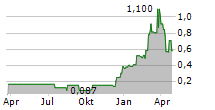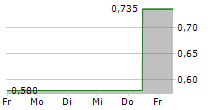
- Data from a Phase I single ascending dose (SAD) study in Australia in subjects with elevated low-density lipoprotein cholesterol (LDL-C) showed that ASC47, via subcutaneous (SQ) injection, demonstrated a half-life of 21 days, supporting once-monthly administration in patients with obesity
- In multiple pre-clinical studies using the diet-induced obese (DIO) mouse model, ASC47 demonstrated healthy weight loss (muscle-preserving weight loss)
- Compared to semaglutide in a head-to-head pre-clinical study using a DIO mouse model, ASC47 reduced total fat mass (-63.5%), statistically and significantly more than semaglutide (-39.6%). In the same study, ASC47 statistically and significantly increased total muscle mass (+5.8%), while semaglutide decreased total muscle mass (-9.3%). Total body weight reduction was similar between ASC47 (-24.6%) and semaglutide (-23.1%), even though caloric intake reduction in ASC47-treated DIO mice was significantly less than semaglutide-treated DIO mice
- Compared to tirzepatide in a head-to-head pre-clinical study using a DIO mouse model, ASC47 reduced total fat mass (-68.0%), statistically and significantly more than tirzepatide (-50.4%). In the same study, ASC47 statistically and significantly increased total muscle mass (+8.1%), while tirzepatide decreased total muscle mass (-3.8%). Total body weight reduction was similar between ASC47 (-23.6%) and tirzepatide (-22.4%), even though caloric intake reduction in ASC47-treated DIO mice was significantly less than tirzepatide-treated DIO mice
- ASC47 was designed with unique and differentiated properties to enable targeted delivery to adipose tissue, resulting in high drug concentrations in the adipose tissue in a dose-dependent fashion. In DIO mice with SQ dosing of 15 mg/kg ASC47, once every two weeks, the drug concentration in the adipose tissue 14 days after the last dose was 7-fold of human efficacious drug concentration predicted by a preclinical model
- One of the key mechanisms of action of ASC47 to reduce fat and achieve muscle-preserving weight loss is through uncoupling protein 1 (UCP-1)-mediated thermogenesis in the adipose tissue
HONG KONG, Nov. 7, 2024 /PRNewswire/ -- Ascletis Pharma Inc. (HKEX:1672, "Ascletis") announces topline results of its Phase I single ascending dose (SAD) study in Australia in subjects with elevated low-density lipoprotein cholesterol (LDL-C) (NCT06427590) for its first-in-class, muscle-preserving weight loss drug candidate, ASC47 for the treatment of obesity.
Phase I Clinical Data
ASC47 demonstrated a half-life of 21 days in subjects with elevated LDL-C> 110 mg/dL (2.8 mmol/L) who received ultra-long acting, subcutaneously injected ASC47, supporting once-monthly administration in patients with obesity. Furthermore, ASC47 demonstrated target engagement with significant reductions of lipid biomarkers at day 29 after single subcutaneous (SQ) injections.
The SAD study of ASC47 monotherapy in subjects with elevated LDL-C has five cohorts with subjects receiving 10 mg, 30 mg, 90 mg, 180 mg, 360 mg ASC47 or placebo via SQ injections. The subjects have multiple outpatient visits over eight weeks after the single SQ injections of ASC47 or placebo. Dosing of the first three cohorts (10 mg, 30 mg and 90 mg) has been completed where a total of 20 subjects with elevated LDL-C have received ASC47 or placebo. ASC47 demonstrated a favorable tolerability profile with no serious adverse events (SAEs) and no discontinuations due to adverse events (AEs). The majority of AEs were mild (grade 1). Only two subjects (2/20) reported mild injection site reactions (grade 1 only). No gastrointestinal and cardiac AEs were reported. No abnormal liver enzymes were reported. No clinically meaningful findings in laboratory tests, electrocardiograms, vital signs, or physical examinations were observed.
Based on safety, pharmacokinetic and target engagement data of the SAD study of ASC47 monotherapy in subjects with elevated LDL-C, the second Phase I study (SAD study of ASC47 monotherapy in patients with obesity) has been initiated in Australia. Topline data are expected in the first quarter of 2025.
ASC47 has two additional Phase I studies in Australia: multiple ascending dose (MAD) study of ASC47 monotherapy in patients with obesity, and MAD study of ASC47 in combination with tirzepatide or semaglutide in patients with obesity. Detailed clinical data from these trials are expected to be presented at medical conferences in 2025.
Preclinical Efficacy Data
ASC47 monotherapy demonstrated dose-dependent healthy weight loss (muscle-preserving weight loss) in two head-to-head diet-induced obese (DIO) mouse studies compared to semaglutide and tirzepatide. In both studies, ASC47 demonstrated clinically meaningful weight loss at low doses of 15 mg/kg and 45 mg/kg (once every two weeks or once weekly) via SQ injections. These doses in mice are predicted to translate into clinically applicable doses in humans.
Compared to semaglutide (30 nmol/kg, once daily, SQ), a clinically relevant dose of ASC47 (45 mg/kg, once every two weeks, SQ) reduced total fat mass (-63.5%, p=0.007 vs semaglutide), statistically and significantly more than semaglutide (-39.6%) in a DIO mouse study (Table 1). ASC47 increased total muscle mass (+5.8%, p<0.0001 vs semaglutide) compared to a decline in total muscle mass of semaglutide (-9.3%) (Table 1). Total body weight reduction was similar between ASC47 (-24.6%) and semaglutide (-23.1%) (Table 1), even though caloric intake reduction in ASC47-treated DIO mice was significantly less than semaglutide-treated DIO mice.
Table 1. ASC47 reduced more fat and increased muscle in a dose-dependent manner compared to semaglutide in a head-to-head DIO mouse study
Drug | Dosing | Total body weight change | Total fat mass change | Total muscle mass change |
ASC47 | 15 mg/kg SQ, Q2W | -14.4 % | -37.8 % | +3.9% (p<0.0001 vs semaglutide) |
ASC47 | 45 mg/kg SQ, Q2W | -24.6 % | -63.5% (p=0.007 vs semaglutide) | +5.8% (p<0.0001 vs semaglutide) |
Semaglutide | 30 nmol/kg SQ, QD | -23.1 % | -39.6 % | -9.3 % |
Note: Q2W: once every two weeks; SQ: subcutaneous; QD: once daily
Compared to tirzepatide (3 nmol/kg, once daily, SQ), a clinically relevant dose of ASC47 (45 mg/kg, once weekly, SQ) reduced total fat mass (-68.0%, p=0.01 vs tirzepatide), statistically and significantly more than tirzepatide (-50.4%) in a DIO mouse study (Table 2). ASC47 increased total muscle mass (+8.1%, p=0.004 vs tirzepatide) compared to a decline in total muscle mass of tirzepatide (-3.8%) (Table 2). Total body weight reduction was similar between ASC47 (-23.6%) and tirzepatide (-22.4%) (Table 2), even though caloric intake reduction in ASC47-treated DIO mice was significantly less than tirzepatide-treated DIO mice.
Table 2. ASC47 reduced more fat and increased muscle in a dose-dependent manner compared to tirzepatide in a head-to-head DIO mouse study
Drug | Dosing | Total body weight change | Total fat mass change | Total muscle mass change |
ASC47 | 15 mg/kg SQ, QW | -15.4 % | -46.1 % | +7.1% (p=0.009 vs tirzepatide) |
ASC47 | 45 mg/kg SQ, QW | -23.6 % | -68.0% (p=0.01 vs tirzepatide) | +8.1% (p=0.004 vs tirzepatide) |
Tirzepatide | 3 nmol/kg SQ, QD | -22.4 % | -50.4 % | -3.8 % |
Note: QW: once weekly; SQ: subcutaneous; QD: once daily
ASC47 - Adipose-targeted THRß Selective Agonist
As a potential first-in-class muscle-preserving weight loss drug candidate, ASC47 is an adipose-targeted thyroid hormone receptor beta (THRß) selective small molecule agonist. ASC47 is a new molecular entity (NME) discovered and developed in-house at Ascletis.
ASC47 possesses unique and differentiated properties to enable adipose targeting, resulting in dose-dependent high drug concentrations in the adipose tissue. In DIO mice with SQ dosing of 15 mg/kg ASC47, once every two weeks, the drug concentration in the adipose tissue 14 days after the last dose was 7-fold of human efficacious drug concentration predicted by a preclinical model. Adipose tissue plays an important role in metabolic diseases including obesity[1]. Adipose-targeted delivery of ASC47 differentiates ASC47 from other THRß selective agonists[2], which are primarily liver-targeted.
Expression of THRß is high in adipose tissue as well as in liver tissue[3]. As such, clinically meaningful weight loss requires high concentrations of THRß selective agonists in adipose tissue. In recent years, a number of THRß selective agonists showed success for treatment of metabolic dysfunction-associated steatohepatitis (MASH, a liver disease) through liver-targeted delivery. However, these THRß agonists lack adipose-targeting properties. For example, there is significant high concentration of resmitirom in liver tissue but little or no resmitirom in adipose tissue[2]. ASC47 possesses both THRß selectivity and adipose-targeted delivery. Targeted delivery of ASC47 to the adipose tissue enables the use of low and clinically applicable doses of ASC47 for the treatment of obesity.
Mechanisms of Action of ASC47
One of the key mechanisms of action of ASC47 to reduce fat and achieve muscle-preserving weight loss is through uncoupling protein 1 (UCP-1)-mediated thermogenesis in the adipose tissue.
In a head-to-head study in DIO mice, at clinically relevant doses of 15 mg/kg and 45 mg/kg ASC47 (SQ, once every two weeks), expression of UCP-1 in adipose tissue of ASC47-treated DIO mice was up to 4-fold of that of semaglutide-treated DIO mice. The levels of expression of UCP-1 in adipose tissues between semaglutide-treated and vehicle control treated DIO mice were essentially the same.
This mechanism differentiates ASC47 from incretin-based drug candidates as well as other muscle-preserving drug candidates in preclinical and clinical development.
The detailed mechanisms of action, preclinical efficacy and muscle preservation, and other preclinical data are expected to be presented at medical conferences in 2025.
ASC47 Phase I Studies in Australia for the Treatment of Obesity
- SAD study of ASC47 monotherapy in subjects with elevated LDL-C: Study objectives include safety, tolerability, target engagement and pharmacokinetics in subjects with elevated LDL-C receiving SAD of ultra-long-acting ASC47 monotherapy via SQ injections.
- SAD study of ASC47 monotherapy in patients with obesity: Study objectives include safety, tolerability, pharmacokinetics and preliminary efficacy in patients with obesity (body mass index (BMI) 30-40) receiving SAD of ultra-long-acting ASC47 monotherapy via SQ injections.
- MAD study of ASC47 monotherapy in patients with obesity: Patients with obesity (BMI 30-40) receive MAD of ASC47 (a total of 3 doses), once every four weeks via SQ injections. Study objectives include safety, tolerability, pharmacokinetics and preliminary efficacy of ultra-long-acting ASC47 monotherapy.
- MAD study of ASC47 in combination with tirzepatide or semaglutide in patients with obesity: Patients with obesity (BMI 30-40) receive combination therapy of ASC47 with tirzepatide (or semaglutide) or tirzepatide (or semaglutide) monotherapy. SQ dosing frequency of ASC47 is once every four weeks with a total of 3 doses. SQ dosing frequency of tirzepatide (or semaglutide) is once a week with a total of 12 doses. Study objectives include safety, tolerability, pharmacokinetics and preliminary efficacy of combination therapy of ASC47 with tirzepatide (or semaglutide) versus tirzepatide (or semaglutide) monotherapy.
References
- Gilani A, et al. Diabetes. 2024; 73(2), 169-177.
- Harrison SA, et al. Lancet 2019; 394: 2012-24.
- https://www.ncbi.nlm.nih.gov/gene/7068.
About Ascletis Pharma Inc.
Ascletis is an innovative R&D driven biotech listed on the Hong Kong Stock Exchange (1672.HK), covering the entire value chain from discovery and development to GMP manufacturing. Led by a management team with deep expertise and a proven track record, Ascletis has rapidly advanced its pipeline, focusing on two therapeutic areas with unmet medical needs from a global perspective: metabolic diseases and viral diseases. Ascletis has multiple clinical stage drug candidates in its R&D pipeline.
For more information, please visit www.ascletis.com.
Contact:
Peter Vozzo
ICR Healthcare
443-231-0505 (U.S.)
[email protected]
Ascletis Pharma Inc. PR and IR teams
+86-181-0650-9129 (China)
[email protected]
[email protected]
SOURCE Ascletis Pharma Inc.




